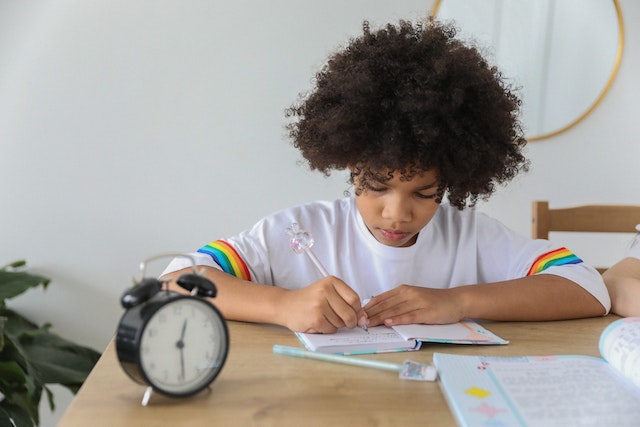Nonverbal Communication Skills: Why You can Never be an EFFECTIVE communicator
Did you know that working hard to develop excellent communication skills will end in futility without nonverbal communication skills?
Yes, a large percent of all interpersonal communication you have with others is nonverbal communication. Yet the subject of nonverbal communication is the most neglected by many.
In this article, you’ll learn what nonverbal cues are and the essential nonverbal communication skills you need to become an effective conversationalist or communicator. No matter the situation that you find yourself in.
Why Nonverbal communication skills?
It’s no news to you that a first impression can be profound and often goes on to last longer. And a sure way to project a positive progression to people you have a conversation with is by maintaining appealing nonverbal cues.
These nonverbal cues are the body language or signals you put up (whether knowingly or not) during interactions with friends, strangers, colleagues at work, or family members.
In other words, the importance of nonverbal communication cannot get overstressed. Because your understanding of it as a core and practical concept of communication influences how well you’re able to create and sustain informal and business connections with people.
How do you improve your Nonverbal communication skills?
Learning and sharpening your nonverbal communication skills will enable you to get the most from every interaction you engage in. But that will be impossible without knowing the nonverbal cues humans exhibit– and what they could mean.
Thus, improving your nonverbal communication skills is about learning how you can read most nonverbal signals used in interpersonal relationships. That leads us to…
Examples of Nonverbal Communication skills
Remember, nonverbal communication covers all messages or information you send by wordless signals, which you essentially use your body language to say.
Thus, below are some parts of your body you employ for communication and the skills to apply them to achieve effective conversations:
1. Your Eyes
Your eyes are like “golden balls” you use to play the ‘game’ of communication. But when used inappropriately can render any physical interaction or communication ineffective.
Eye contact is a nonverbal communication skill
That’s why you should learn the skill of making eye contact whenever you’re conversing. In other words, you should establish good eye contact with whoever you’re discussing. That’s because it helps position you as an engaging personality, even as it has a way of making your conversation partner feel you can be trusted.
However, you don’t want to make your eye contact overly intense, provocative, and irritating.
2. Your Face
Interestingly your eyes are part of your face, but together with other components that make up your face, you send powerful nonverbal cues. And these cues are called facial expressions.
Nonverbal Communication skills— using facial expressions
To be an effective communicator who knows how to use facial expressions accurately, you must learn how to take charge of your emotions. That’s because usually, your facial expression changes in the same direction as your inner feeling.
So if you’re sad, it’ll show in your facial expression by default, except you’ve learned the art of taking control of emotion. But then, you can always switch your facial countenance to what you want to be. Though that requires a deliberate effort on your part.
3. Your head
Another part of your body that you need befitting nonverbal communication skills to utilize is: your head. Just like you use your eyes and face in “body languaging,” you can also use your head to send great signals. It could be during a conversation with a colleague or a client that you’re about to sell one of your company’s products or services.
Nonverbal Communication skills of using your head
For example, you can nod your head to depict your comprehension of what your boss is communicating to you. Likewise, when people nod their heads while presenting a point in a meeting, you know that could suggest:
- Consent to what you’re saying or request
- Disapproval of what you’re saying
Your hands — and associated Nonverbal Communication skills
Aside from your eyes and mouth (for talking), what part of your body do you use most to connect with others at networking events?
You know the answer. Your hands.
Every day, we do a lot of handshakes, though to different degrees based on the difference in cultures.
In any case, using handshakes appropriately is a nonverbal communication skill.
As a rule of thumb, at networking events or business meetings, you should have firm handshakes with people. But you don’t want to cause pain in someone else’s palm because that would allow you to get associated with hostility, aggression, and arrogance.
Other Nonverbal Communication skills
The following below other essential nonverbal communication skills you should take note of:
- Moderately use your hands to make gestures. Excessive usage may appear unreal and send an unprofessional impression about you.
- Eliminate possible distractions that may come from handling or pressing your phone or any other thing.
- Don’t make sarcasm out of serious matters, and therefore, laugh out loud. That’s you must learn to be guided.
- Keep reasonably accepted physical space with your conversation partner. You don’t want to be standing too close to a business associate of the opposite sex.
That takes us to…
3 Things to help you improve your Nonverbal Communication skills
Since we’ve looked at some of the commonly used nonverbal communication cues, it’s crucial to understand these three things in your journey to polishing your nonverbal communication skills:
1. Moderation
To communicate effectively you must appreciate what it means to be moderate. While being moderate may seem hard to explain, it’s something you’ve heard of— perhaps a thousand times.
On this ground, when using nonverbal communication cues, you should stay simple and original. Thus, you shouldn’t try to go overboard and abuse the very essence of nonverbal communication in the very first instance.
2. Observe the setting
What is acceptable in one culture may be considered a taboo in another. That’s why observing the setting is paramount. It doesn’t only make one get acquitted with what goes in a particular setting. Be it a corporate body, town, region, or as the case may be.
Observing what obtains in a group or a particular business environment will help you communicate effectively, using appropriate nonverbal communication skills and cues. For example, in some cultures, shaking hands is not widely accepted.
3. Stay focused on the goal of the conversation
Being able to read and use body language most effectively requires one to be sensitive. But you cannot stay sensitive in the communication process when you allow yourself to get carried away by distractions.
Nonverbal cues in interview
An interview is one thing many people dread, and it can be scary for the first time. But how do you stay calm and hold a grip of yourself while you portray the best nonverbal cues to your interviewer?
Indeed, every job applicant knows it takes more than writing a job application letter to land a job. But learning how to use the skills below will offer you an enormous chance of achieving success:
Nonverbal communication skills you use can during an interview(s):
- Upon entering the interview room, quickly establish eye contact with your interviewer. But if they are more than one, you should naturally shuffle your eyeballs from side to side, looking at them as you answer their questions.
- Sit upright in a very relaxed manner after your interviewer asks you to do so.
- Keep a smiling face as you try to mirror some of the interviewer’s behaviors. But you don’t want to (and shouldn’t) overdo it.
- Listen attentively with your body slightly leaning forward. That will tell your interviewer that you’re attentive and ready to communicate.
- Use a calm and moderate tone when it’s your turn to speak. You don’t want to sound arrogant or timid, but polite.
Conclusion
However, using a single gesture to decode a message may not be accurate. In other words, you need to analyze and synthesize the information you get from all the body language (or gestures) while taking context into perspective. That will keep you open as you put some of the nonverbal communication skills learned to work.








